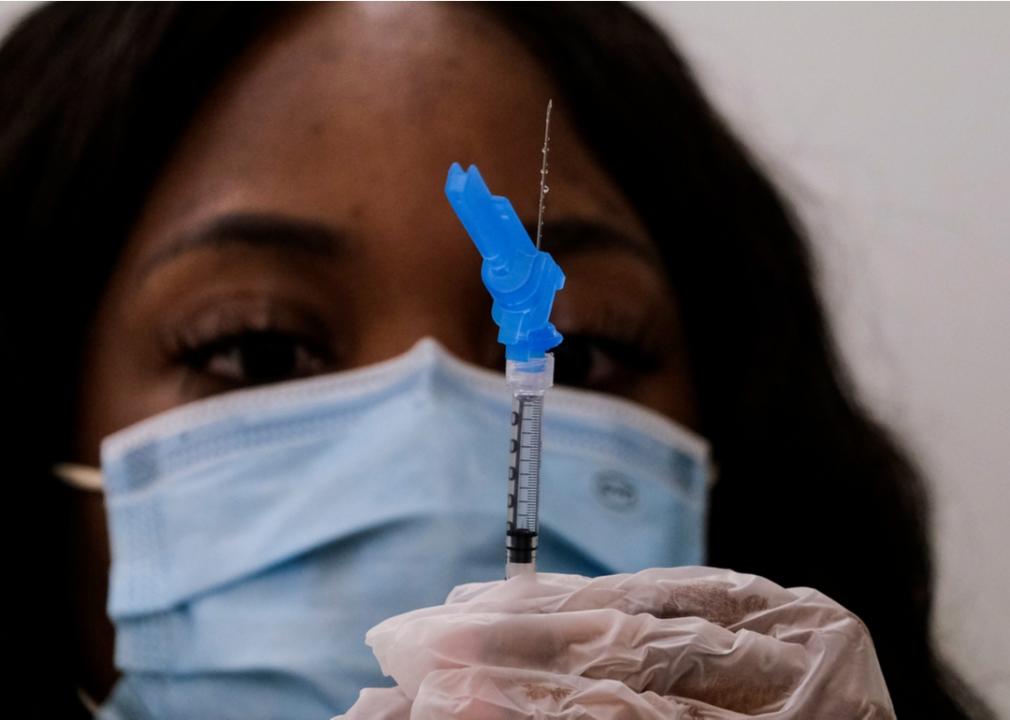California is the #4 state that will need nurses the most by 2030
Ringo Chiu // Shutterstock
California is the #4 state that will need nurses the most by 2030
A perfect storm of factors taken all together could leave the world short of almost 5.7 million nurses by 2030, according to forecasts by Becker’s Hospital Review.
Issues in the United States contributing to this shortage include the baby boomer generation reaching retirement age, an increased need for health care as our population gets older, a lack of qualified educators, and the COVID-19 pandemic. While every state is feeling the effects of these factors, their intensity—and the amount to which they’ll affect the nursing supply—varies immensely.
NursingEducation.org used data from the Health Resources and Services Administration’s Health Workforce Simulation Model, which is an integrated health professions projection model that estimates the current and future supply of and demand for health care providers. The 2017 model, which is the most recent available, looks at the demographics of current health care providers, current and projected population numbers, and the state of the national economy and the labor market.
For this story, the states were ranked by the projected surplus of registered nurses in 2030, which is the percent change between the projected supply of RNs and the projected demand. A positive percentage means there is a projected surplus of nurses in 2030, and a negative percentage means there is a projected shortage of nurses. Any ties are broken by the projected surplus of licensed practical nurses in 2030.
Keep reading to see where your state falls in the rankings and what’s being done to help amend the crisis—whether improving the student-to-professional pipeline or providing monetary incentives.
California by the numbers
– Projected shortage of registered nurses in 2030: 11.5%
— 2030 projected demand for registered nurses: 387,900
— 2030 projected supply of registered nurses: 343,400
– Projected surplus of licensed practical nurses in 2030: 3.1%
— 2030 projected demand for licensed practical nurses: 117,400
— 2030 projected supply of licensed practical nurses: 121,000
While it’s been a known fact for years that California will be at the center of the nursing shortage crisis come 2030, the COVID-19 pandemic has only accelerated the issue. At two separate points over the last year the state, namely the Los Angeles and San Francisco areas, has been the epicenter of the pandemic, and its 300,000 nurses have been stretched to their limits. The concern now is that many nurses, especially older ones, will retire early due to the stress and over concern for their own health and well-being, which will only make the projected 11.5% shortage happen before 2030.
Keep reading to see the states that will need nurses the most and least by 2030, or check out the full national story here.
States that will need nurses the most by 2030
#1. Alaska
– Projected shortage of registered nurses in 2030: 22.7%
#2. South Carolina
– Projected shortage of registered nurses in 2030: 16.6%
#3. South Dakota
– Projected shortage of registered nurses in 2030: 14.0%
States that will need nurses the least by 2030
#1. Washington D.C.
– Projected surplus of registered nurses in 2030: 282.6%
#2. Wyoming
– Projected surplus of registered nurses in 2030: 50.9%
#3. New Mexico
– Projected surplus of registered nurses in 2030: 44.9%
This story originally appeared on NursingEducation and was produced and distributed in partnership with Stacker Studio.
![]()

